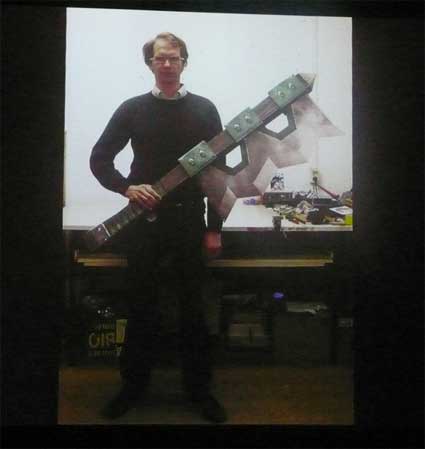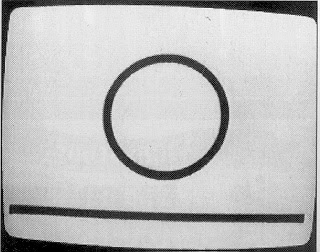The Generator X – Beyond the Screen event i mentioned earlier involved a series of talks by artists, architects and designers. I went to the second evening of public presentations, liked everything i saw and heard but i’ll just focus on a few projects mentioned by Aram Bartholl (here’s his website but it’s his blog that gets my vote) because 1. i had missed all his other talks so far and 2. haha! i’ve lost the notes i took during the other talks.
Sascha posted a write-up of a talk Aram gave almost a year ago about the way his work looks for connections between the virtual world and the physical one so i’ll just take the story from here and focus on the artist’s latest projects.
Chat, presented at ars electronica, the 24th Chaos Communication Congress and more recently at Club Transmediale is a mobile performance that allows 2 participants to send each other text messages, like in World of Warcraft or Second Life. As soon as they’ve been entered, the texts appear in comic-strip-like balloons above the speaker’s head.
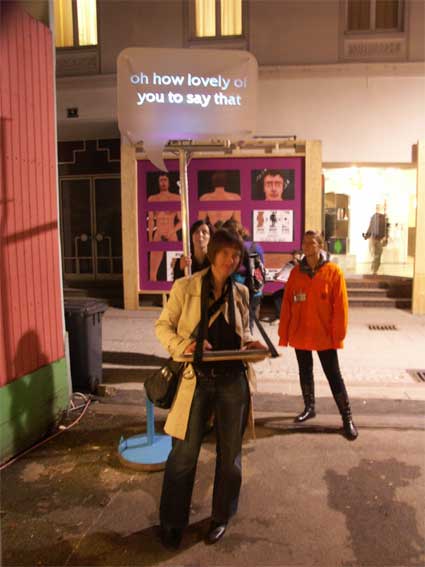
In 3D worlds, chatting contrasts with chat “rooms” as the online form of conversation has been re-endowed with a spatial dimension: the typed-in message appears in a dialogue bubble above the avatar’s head and follows their proxy on its way through the virtual world. Other players within a certain range can read these messages and, in turn, can type an answer on their own bubble. Chat translates this form of conversation into the physical, public sphere.
Aram reminded how much is about money in Second Life and how this might explain its success. In the vitual island, you can make money out of data thanks to the digital right managements embedded into the game.
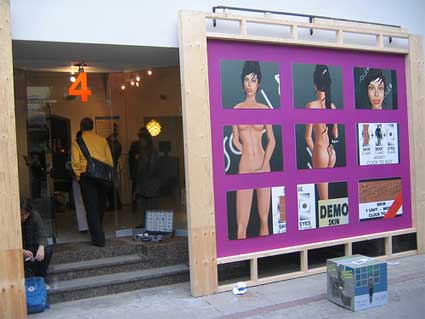
For the Second City project that ars electronica commissioned him last Summer, Aram invited other artists and turned a part of a deserted shopping street into an exhibition space that was focusing on physical representations of the virtual world.
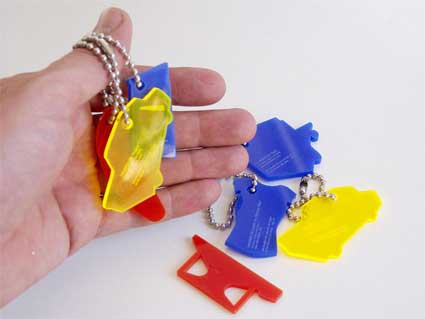
One of the projects developed in Marienstrassen allowed passersby to walk in a “shopping panel” and buy a Trabi or any other good for their avatar and get a laser cut plastic token in the shape of the object purchased as a receipt
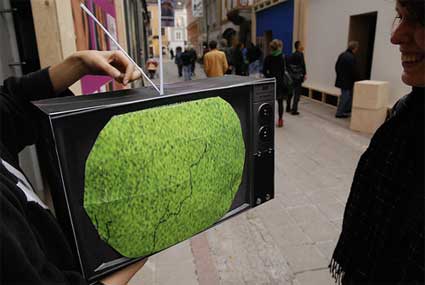
Another project part of Second City was Export to World. Created by Linda Kostowski and Sascha Pohflepp, the workshop commented ironically on the design and production of merchandise in virtual worlds. Their shop offered custom-made or purchased virtual objects. Shoppers would enter and buy the object of their choice at a price determined daily by the current Linden dollar/euro exchange rate. Instead of seeing the good suddenly appearing in their inventory, purchasers would receive a 2D paper representation of it which they could manually cut and shape into a 3D model of that object. The final results are paper representations of digital representations of real objects, including all the flaws that copying entails.
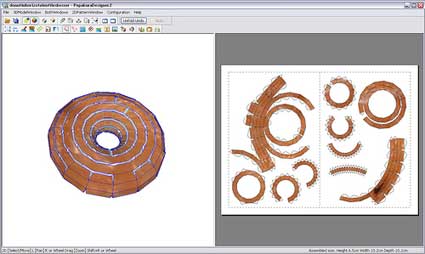
The Bubbagum machine was particularly impressive as this real photography seemed to have been photoshop’d. It wasn’t, that’s the real effect of a paper virtual bubble gum machine. Not sure i’m expressing myself very clearly here…
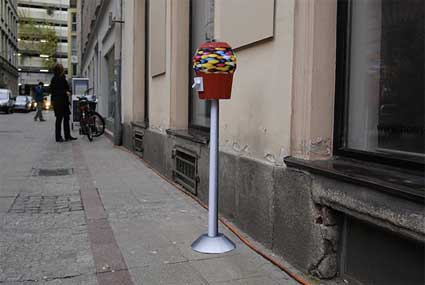
Export to Life, Bubbagum machine
Anyway, Aram ended his presentation with this slide of a project he is working on: WoW weapons which he plans to carry around the city. Just the thought of such a performance taking place somewhere in Curry Wurst Paradise makes me say once again that this city is the best place on earth.
